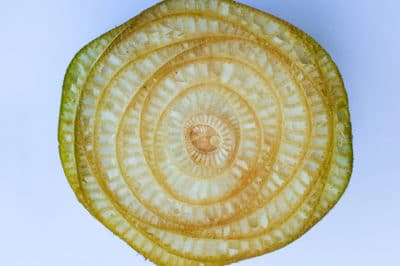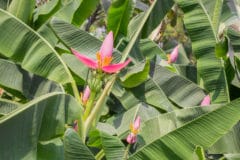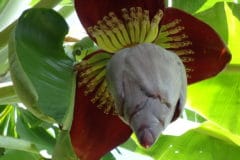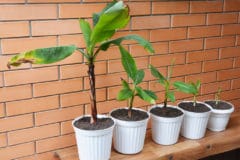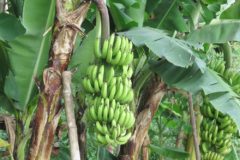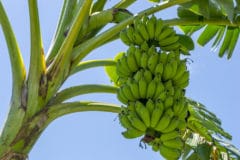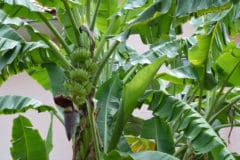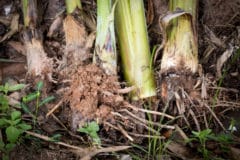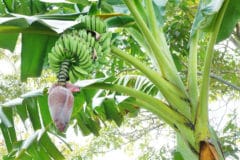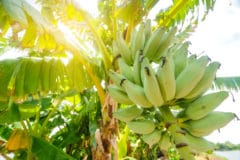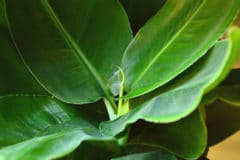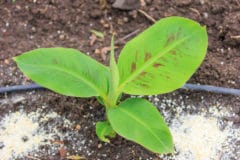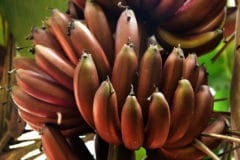Banana Basics
Here are some basic facts about bananas:
- Although considered a tropical plant, some edible bananas grow in temperate climates, USDA Zones 9 through 11.
- It takes about three months for bananas to develop fully.
- Bananas must be harvested while green and ripened off the tree.
- The banana variety known as plantains must be cooked before eating.
Not Wood But Leaves
The banana stalk consists of tightly rolled leaves. As the plant grows, leaves erupt from the inner top of the stalk. If you were to cut the stalk through the middle, you would see a series of concentric rings, similar to those of a tree trunk. However, each ring is actually a single leaf. The leaves are pressed together so tightly the stalk is quite strong.
Eating Banana Stalks
The entire banana plant is edible, and that’s true of the stalk as well. After harvest, the tough outer layers of the stalk are peeled to reveal the yellowish or white interior. The stalks have a crisp texture, with a mild flavor described as sweet-tart and a slightly bitter aftertaste. The peeled stalk is chopped or sliced, soaked in water or buttermilk and cooked in stir-fries, soups or stews.
Banana Stalks and Health
As you might expect, the stalk of a banana is high in fiber, which is necessary for good digestive function. In oriental and Ayurvedic medicine, the plant is seen as cooling – a benefit in hot environments. It is used as a diuretic and to help prevent kidney stones, as well as to aid weight loss. The stalk is high in potassium and vitamin B6.
Pseudostem vs True Stem
The true flowering stem of a banana grows up through the center of the pseudostem when the plant is about six to nine months old. Also called an inflorescence, the true stem emerges from the top of the plant and then arches downward. The large, striking “flower” is composed of large leaf bracts which lift to reveal the small true flowers underneath.
Growing Bananas
Banana plants need rich, well-drained soil. They prefer full sun but in really hot climates may do better with dappled shade. Water to keep the soil moist but not soggy. Fertilize with dilute liquid fertilizer each time you water or use a timed- release fertilizer once a month. Bananas may be edible or strictly ornamental and prefer to grow in groups.
